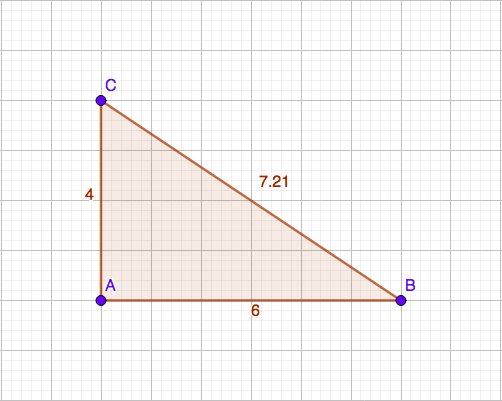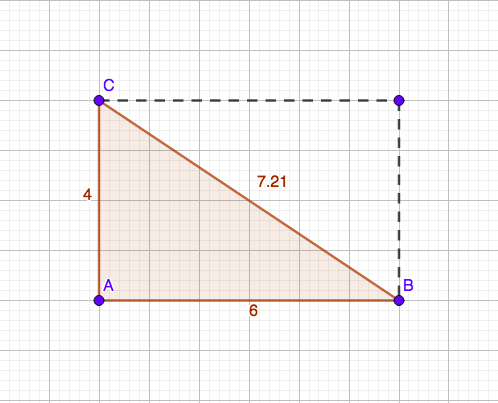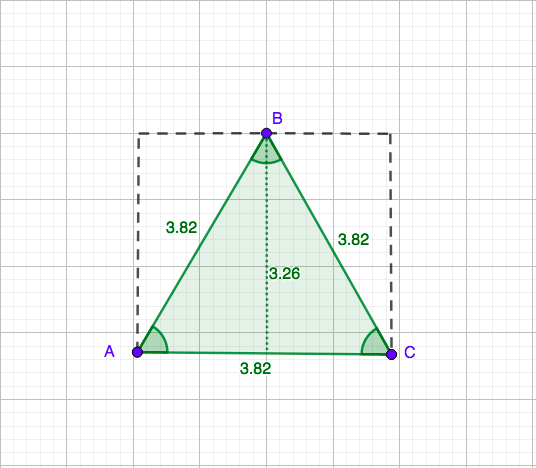How do you find the area of a triangle?
1 Answer
Explanation:
The formula for the area of a triangle is
For example, here we have a right triangle that has a height of

Imagine another triangle, identical to this one, put together with triangle ABC to form a rectangle:

Here we have a rectangle with a height of
Now we know the area of the rectangle is
So if the area of the rectangle is
So to find the area of a triangle, the formula is
This expression works with other types of triangles too, not just right angle triangles. For example:

A trick that I use to remember the formula is to draw a square/rectangle around the triangle and use that to find the area.
Hope this helped :)

